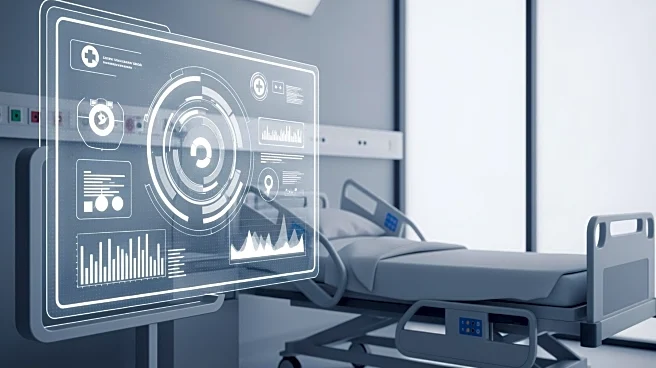What's Happening?
Interactive displays or digital whiteboards are becoming central to modern patient rooms, offering a hub for information, entertainment, and self-service functionalities. These devices, when integrated
with electronic health records, streamline workflows by allowing patients to access information and perform self-service tasks, reducing the administrative burden on clinical staff. At Brigham and Women’s Hospital, a study showed that patients preferred these whiteboards, as they provided real-time updates on lab tests and other critical information, enhancing transparency and reducing anxiety. The technology also allows clinicians to sync care notes in real-time, improving communication and efficiency.
Why It's Important?
The integration of interactive displays in patient rooms represents a significant advancement in healthcare technology, aiming to improve patient experience and operational efficiency. By reducing the time clinicians spend on administrative tasks, these tools allow more focus on patient care, potentially improving outcomes. The ability to provide real-time updates and transparency can alleviate patient anxiety, leading to better patient satisfaction and engagement. This technology also supports the broader trend of digitization in healthcare, which seeks to enhance communication and streamline processes, ultimately aiming to improve the quality of care.
What's Next?
Hospitals may continue to adopt and refine the use of interactive displays, potentially expanding their functionalities to include more personalized patient care options. As the technology evolves, there could be increased collaboration between healthcare providers and tech companies to develop more advanced systems. Stakeholders, including hospital administrators and healthcare IT professionals, will likely focus on integrating these systems with existing electronic health records and ensuring compliance with privacy regulations.
Beyond the Headlines
The adoption of interactive displays in healthcare settings raises important considerations regarding patient privacy and data security. Ensuring that sensitive information is protected while being accessible to authorized personnel is crucial. Additionally, the shift towards digital tools in healthcare may require training for staff to effectively use these technologies, highlighting the need for ongoing education and support.












